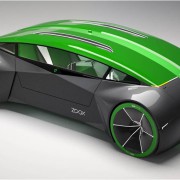Daimler Moving on Mobility with MyTaxi, Moovel
Burney Simpson
Daimler used its Moovel subsidiary in July to continue its aggressive approach to new mobility with investments in Europe and hiring in the U.S. The two actions suggest Daimler won’t stop moving on its ridesharing and Mobility as a Service (MaaS) offerings.
The auto OEM bought 60 percent of Hailo, a ridesharing firm with a checkered past that has a strong presence in the United Kingdom, TechCrunch reports.
Daimler then merged Hailo with MyTaxi, a ridesharing app owned by its subsidiary Moovel. The merged firm will be known as MyTaxi and headquartered in Hamburg.
The new MyTaxi claims 100,000 registered drivers serving 70 million customers in 50 cities across nine countries in Europe, making it one of the leading ridesharing firms on the Continent.
MyTaxi will be led by Andrew Pinnington, the current CEO of Hailo. Daimler named Niclaus Mewes, the founder of MyTaxi’s parent, a managing director of Daimler Mobility Services.
Terms of the deal weren’t released though Pinnington told Reuters that under the all-share deal Daimler will own 60 percent of MyTaxi, while Hailo stakeholders will hold 40 percent.
Hailo had been strong in the U.K. and Ireland while MyTaxi has operations in Austria, Germany, Italy, Poland, Portugal, Spain and Sweden. Hailo closed down its U.S. operations in 2014 while facing tough competition from Uber and Lyft.
Auto OEMs are moving on ridesharing firms this year with GM investing $500 million in Lyft and Volkswagen putting $300 million into Gett.
URBAN MOBILITY PRODUCTS
Meanwhile in the U.S., Moovel North America spirited Matt Jones away from Jaguar Land Rover and named him its chief product officer. He will work out of Moovel NA’s Portland, Ore., headquarters.
Jones will oversee Moovel NA’s “urban mobility products,” according to a press release. While it wasn’t clear from the release what that meant, it suggested that Jones will work to create an integrated transportation service that consumers can control with their smartphones.
These services may range from public and private transit to car-sharing, ride sharing, bike sharing, and other transportation offerings. Consumers will use their phones to access, research, schedule, pay for, and keep track of the services. These MaaS products may be offered on a subscription or an as-needed basis.
At Jaguar Jones oversaw global efforts to develop and implement in-dash and mobile apps for vehicle routing, information and entertainment systems.
Daimler created Moovel North America in April by combining two of its purchases — GlobeSherpa and RideScout.
GlobeSherpa is a mobile booking and ticketing service for public transit agencies, while RideScout brought the transportation app. (See “Daimler Gets Moovel-ing on Mobility as a Service”).
Moovel NA began beta-testing in Portland this spring an app that combined transit ticketing with the ability to call a Lyft vehicle or a Car2go, another Daimler subsidiary.
Car2go is a car-sharing service where consumers use an app to reserve and then drive its two-passenger vehicles. Car2go’s 1.3 million registered members can rent the vehicles by the minute, hour, or day. According to its website Car2go operates in 28 cities in nine countries.


